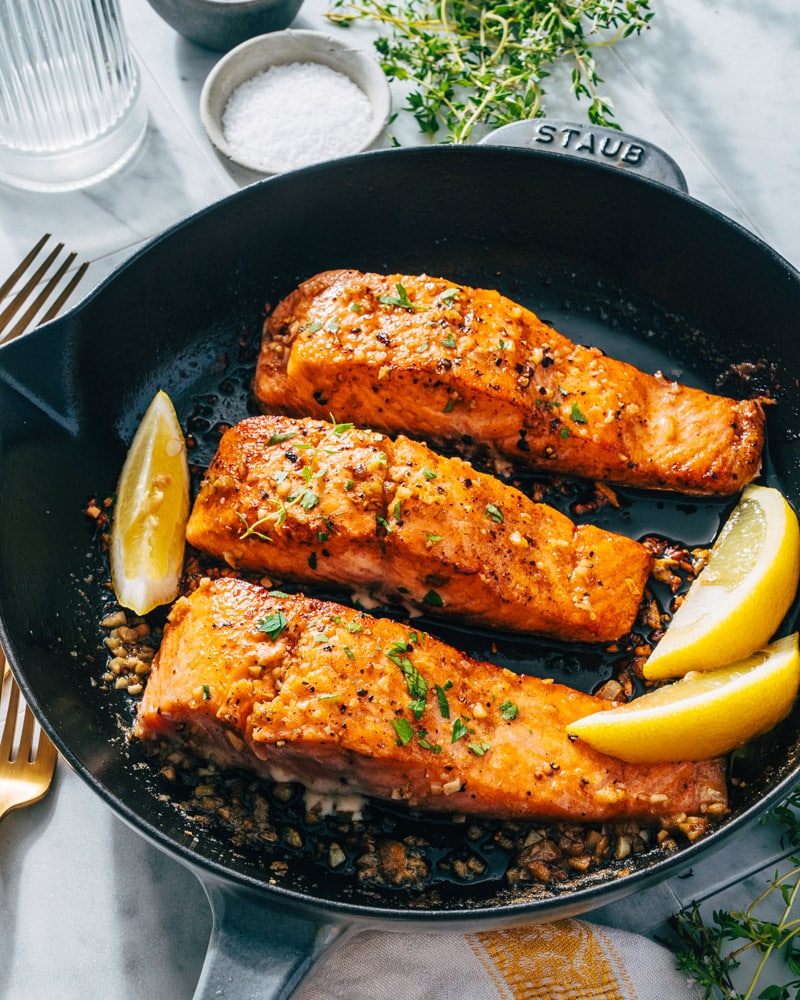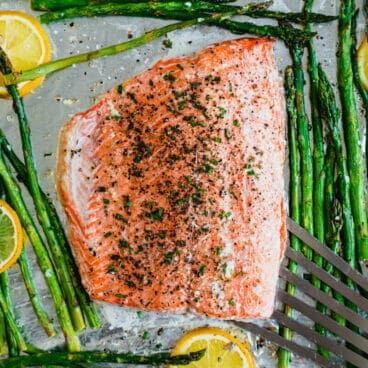Looking for salmon dinner ideas? This fish is a popular choice when it comes to meals, but it’s notoriously tricky to cook it right. Here at A Couple Cooks, we’ve become salmon experts by testing out all the best salmon recipes to make dinnertime delicious! Try it seared, baked, or grilled, with a butter sauce or smothered in a sticky glaze. Or think outside the fillet with burgers, tacos, salad and more! Looking for salmon basics? Try it pan seared, marinated, grilled, baked or broiled. Learn how to know when salmon is done, and browse ideas for leftover salmon.
And now…our top salmon recipes!
Tips for buying good salmon
When buying salmon for these salmon recipes, there’s one rule to keep in mind: get the best quality fish you can find and afford! Low quality salmon can taste very fishy and have a mushy texture or ooze that white stuff once it’s cooked. The quality of the fish can make or break your salmon recipe! Here’s what to look for:
Look for wild-caught salmon. Fish that is wild caught in your country is usually a sustainable choice. (There are also quality options in well-regulated farms; see Seafood Watch Consumer Guide.) Tend toward fresh salmon. Buying salmon fresh from the fish counter usually has the best flavor. Frozen can work too, just try to find high-quality frozen salmon and not a big economy-sized bag. Know your types of salmon. Coho salmon has a nice mild flavor: it’s a good middle of the road option in terms of price. King salmon is incredible, but on the expensive end. Atlantic salmon is often farmed, but can be a sustainable option. We find it’s better when purchased from a fresh counter (versus frozen). Ask about its source at the fish counter.
Main methods for cooking salmon
There are five main ways to cook salmon: pan fried, baked, broiled, grilled, and poached. The best way to assess doneness is with a food thermometer. Salmon is done when the internal temperature measures 125 to 130°F at the thickest point for medium cooked salmon (medium rare is 120°F). The fish will continue to cook after you remove it from the heat. To ensure full safety, the FDA recommended temperature for seafood is 145°F or well done.
The white stuff: albumin
Ever noticed that gooey white stuff that sometimes appears on the surface of the fish after it’s cooked? It’s coagulated protein that seeps to the surface while cooking, called albumin. It’s safe to eat, but it does look less than appetizing on top of a beautiful fillet. The amount of albumin varies greatly depending on the piece of fish you buy, so it’s not something you can fully control. To reduce the albumin, experiment with different types at different grocers to find those with less white stuff. It also helps to brine the salmon in a salt and water solution before baking:
In a large shallow dish, whisk together 4 cups room temperature water and 3 tablespoons kosher salt until dissolved. Place the salmon in the water and wait for 15 minutes.
More with salmon
There are so many ways to enjoy this tasty, tender fish! Here are a few more ideas:
Got leftovers? Try 10 Genius Leftover Salmon Recipes. Canned salmon makes dinner easy with these Canned Salmon Recipes. Opt for smoked with these Easy Smoked Salmon Recipes.
5 from 2 reviews










































